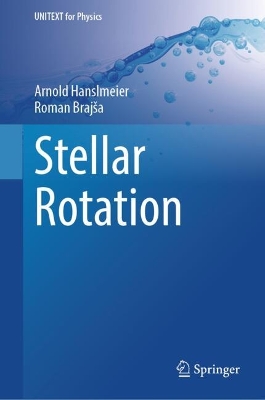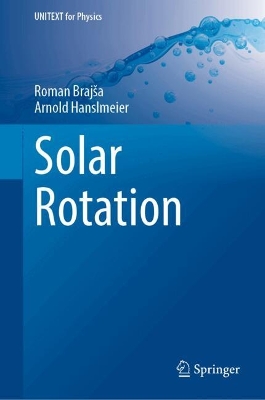UNITEXT for Physics
2 total works
This textbook highlights mechanisms, properties, observations, and research progress of solar and stellar rotation. The rotation of stars is a basic parameter that enters into the dynamo mechanisms that generates stellar activity. The faster stars rotate the higher stellar activity. Moreover, the rotation can also be used to determine stellar ages. Only in the case of the Sun we can directly observe details and therefore determine, e.g., the differential rotation. Thus, the Sun is a prototype for studying other stars. The textbook presents techniques that enable to determine rotation on stars and give a comparison of how stars rotate according to their spectral type and evolution. Special cases are given such as rapidly rotating stars that are strongly deformed into ellipsoids. The textbook is intended for professionals and students in Astrophysicists as well as readers interested in science in general.
The rotation of the Sun is a basic parameter which constrains the boundary conditions for the model of the MHD-dynamo mechanisms that generates solar activity. The Sun is a slowly rotating star with a convection zone below the surface which is the site of the solar dynamo. The solar rotation depends on the latitude, depth/height and time, i.e., the Sun rotates differentially. In the book several aspects of the solar rotation are covered. Only in the case of the Sun we can directly observe details in its atmosphere and so measure the rotation velocity using various tracers, which is one of the mostly used methods for rotation determination. So, the Sun is a prototype for studying other stars. Different techniques that enable to determine solar rotation (e.g., tracer method, spectroscopic method, helioseismology) are presented and their results are compared and interpreted.
In the current literature there is no book exclusively about solar rotation published in the last several decades. The book is intended for astrophysicists, both professionals as well as students and people interested in science in general. The reader would strongly benefit from the comprehensive description of several topics related to the solar rotation.
The authors are highly experienced in teaching astrophysics both to astrophysicists, solar physicists as well as to the public. Therefore, from the didactical point of view the book is written basically as a textbook, so the reader that is not deep within that field can gain an overview. Moreover, for those who want to get deeper into the topics, additional information is given, and recommendations for further literature as well as many citations to recent publications.
The reader will get both (i) a general introduction into the topics (ii) overview of recent publications on the topics. Therefore, the book can serve as a textbook but will be also very useful for research and thesis writing, for example.

